João Barata, a physicist in the Nuclear Theory Group at the U.S. Department of Energy’s (DOE) Brookhaven National Laboratory, has received a fellowship at CERN, the European Organization for Nuclear Research. In October 2024, Barata will begin the three-year-long appointment in CERN’s Department of Theoretical Physics.
Tag: quantum chromodynamics
Calculation Shows Why Heavy Quarks Get Caught Up in the Flow
Theorists have successfully calculated the “heavy quark diffusion coefficient,” which describes how quickly a melted soup of quarks and gluons transfers its momentum to heavy quarks. The results show this transfer is very fast—at the limit of what quantum mechanics will allow.
Novel Framework Improves the Efficiency of Complex Supercomputer Physics Calculations
Some types of quantum chromodynamics (QCD) calculations are so complex they strain even supercomputers. To speed these calculations, researchers developed MemHC, an optimized memory framework.
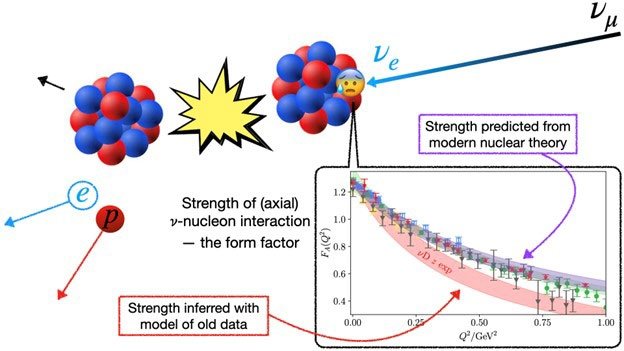
In Preparation for DUNE, Scientists Examine Modern Nuclear Theory for Neutrino Oscillation Physics
Predictions of neutrino-nucleon interaction made using the Lattice Quantum Chromodynamics (LQCD) nuclear theory method predict stronger interaction than predictions determined from older, less precise experimental data.
A Simple Solution for Nuclear Matter in Two Dimensions
Understanding the behavior of nuclear matter is extremely complicated, especially when working in three dimensions. Mathematical techniques from condensed matter physics that consider interactions in just one spatial dimension (plus time) greatly simplify the problem. Using this two-dimensional approach, scientists solved the complex equations that describe how low-energy excitations ripple through a system of dense nuclear matter such as exists at the center of neutron stars.
A Holographic View into Quantum Anomalies
Theorists calculated how the key ingredients of a phenomenon called the chiral magnetic effect should evolve over time in an expanding quark-gluon plasma. The theorists used the holographic principle to model the magnetic fields and other relevant characteristics needed for the effect. The results will help scientists interpret collision data and plan new searches for the chiral magnetic effect and the underlying quantum anomaly.
Signs of Gluon Saturation Emerge from Particle Collisions
By colliding protons with heavier ions and tracking particles from these collisions, scientists can study the quarks and gluons that make up protons and neutrons. Recent results revealed a suppression of certain back-to-back pairs of particles that emerge from interactions of single quarks from the proton with single gluons in the heavier ion. The results suggest that gluons in heavy nuclei recombine, a step toward proving that gluons reach a postulated steady state called saturation, where gluon splitting and recombination balance.
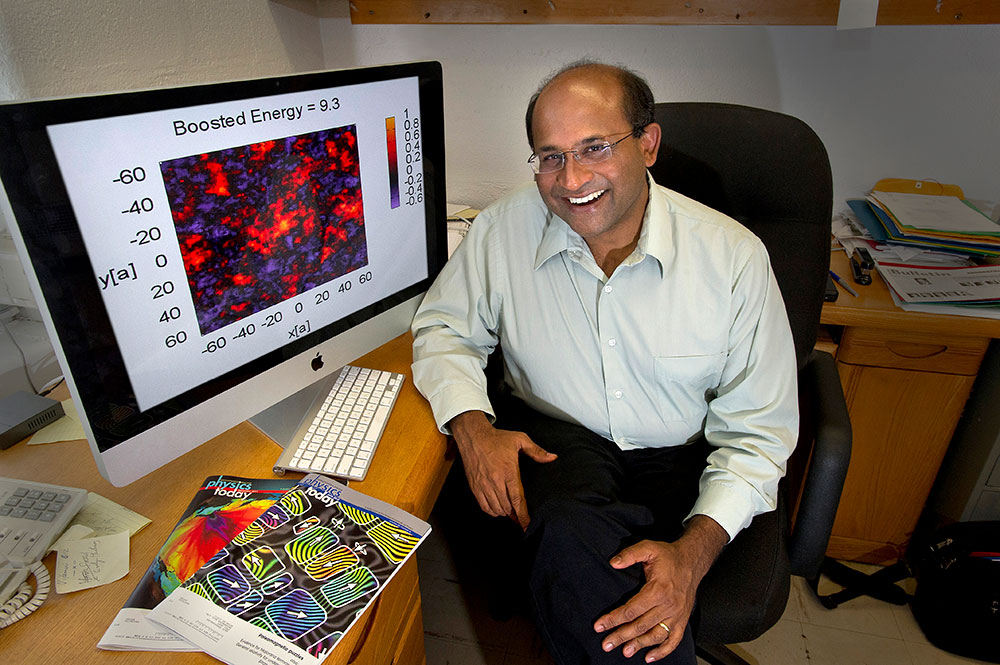
Simons Foundation Announces New Collaboration on Confinement and QCD Strings
The Simons Foundation has announced a new research collaboration to explore the “glue” that holds the visible matter of the universe together. This team will delve into the details of quantum chromodynamics (QCD) — the theory that describes the interactions among the most fundamental building blocks of visible matter.
Nuclear Physicists Hunt for Clues of Color Transparency in Protons
Protons inside the nucleus cling to neighboring protons and neutrons. However, it may be possible to knock out protons so that they interact less with nearby particles as they exit the nucleus, a phenomenon called color transparency. Physicists have observed color transparency in two-quark particles. But physicists hunting for signs of color transparency in protons in a more complicated three-quark system recently came up empty handed.
Physicist wins early career grant to study nuclear physics, quantum phenomena
The U.S. Department of Energy has selected Iowa State’s Srimoyee Sen for an early career award that will help her study nuclear physics and quantum phenomena. The research could lead to the discovery of new materials that could one day contribute to speedy quantum computing or other applications.
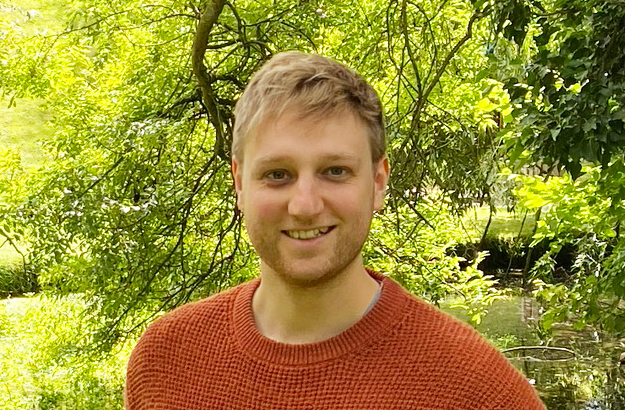
Calculating Hadrons Using Supercomputers
Hadrons are elusive superstars of the subatomic world, making up almost all visible matter, and British theoretical physicist Antoni Woss has worked diligently with colleagues at the U.S. Department of Energy’s Thomas Jefferson National Accelerator Facility to get to know them better. Now, Woss’ doctoral thesis on spinning hadrons has earned him the 2019 Jefferson Science Associates Thesis Prize.
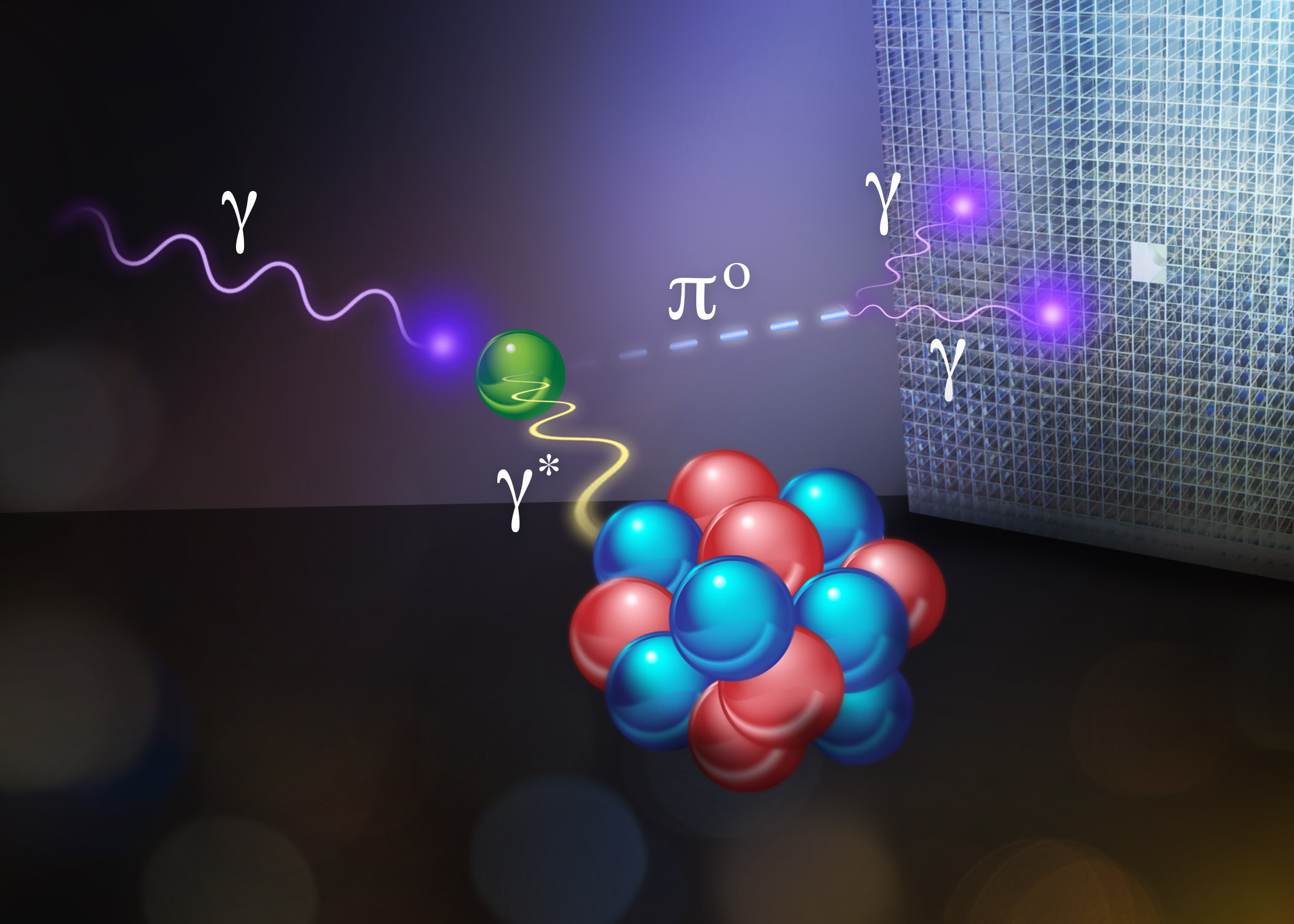
Precise Measurement of Pions Confirms Understanding of Fundamental Symmetry
Nuclear physicists have announced the most precise measurement yet of the ultra-short lifetime of the neutral pion. The result is an important validation of our understanding of the theory of quantum chromodynamics, which describes the makeup of ordinary matter. The research, carried out at the Department of Energy’s Thomas Jefferson National Accelerator Facility, was recently published in the journal Science.
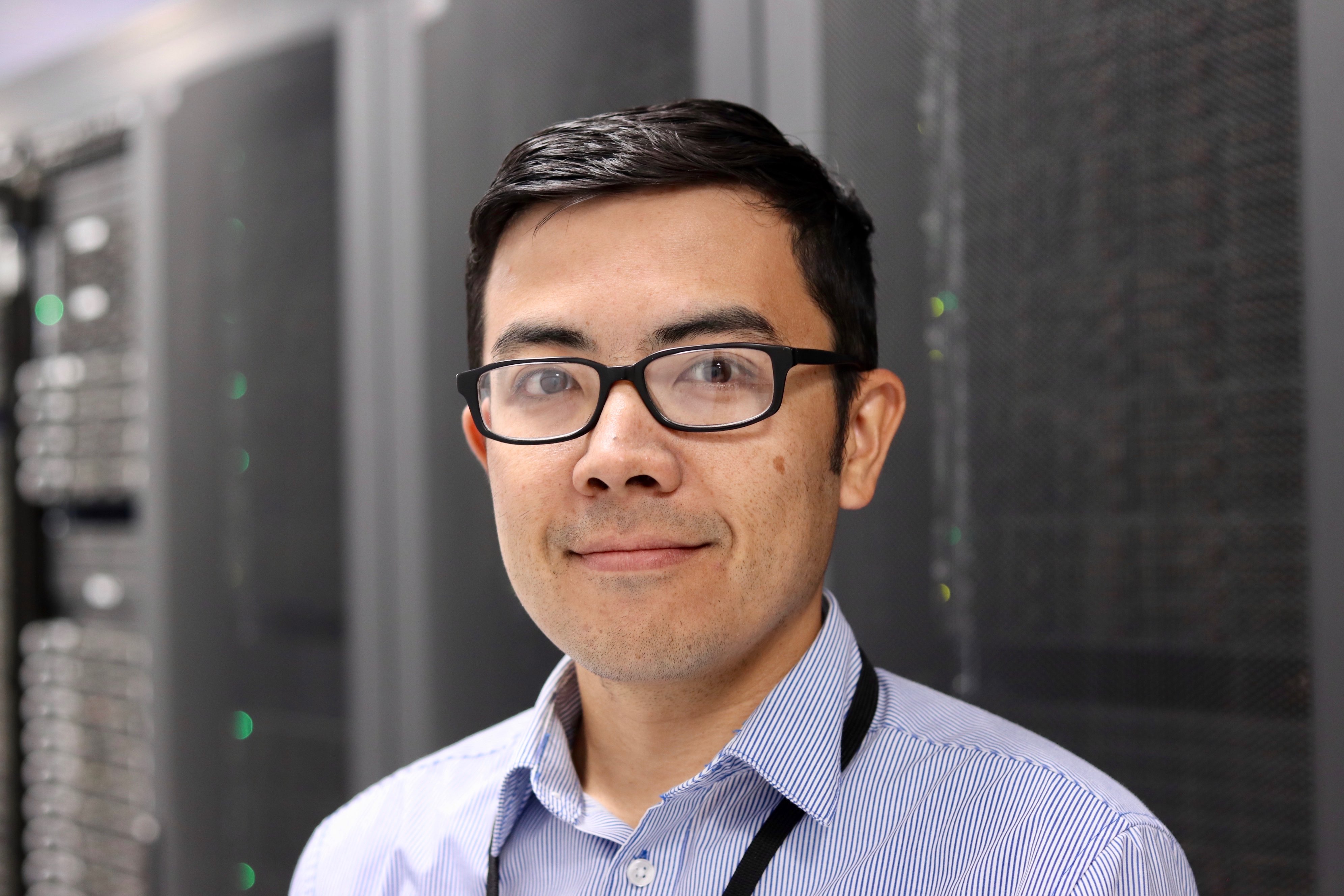
Analyzing Matter’s Building Blocks
Nobuo Sato is working to put the know in femto. He’s just been awarded a five-year, multimillion dollar research grant by the Department of Energy to develop a “FemtoAnalyzer” that will help nuclear physicists image the three-dimensional internal structure of protons and neutrons. Now, Sato is among 76 scientists nationwide who have been awarded a grant through the DOE Office of Science’s Early Career Research Program to pursue their research.